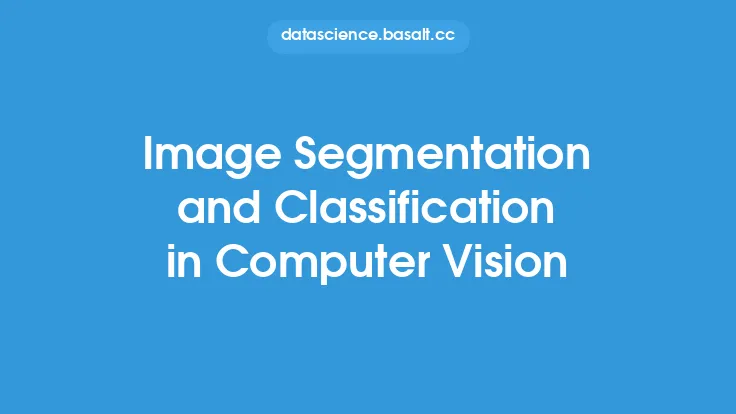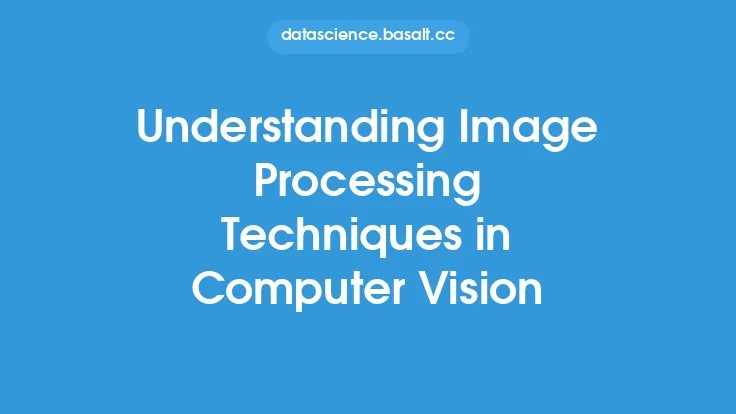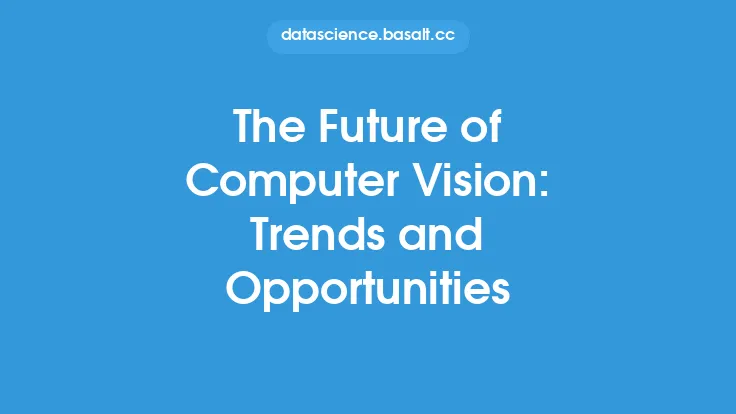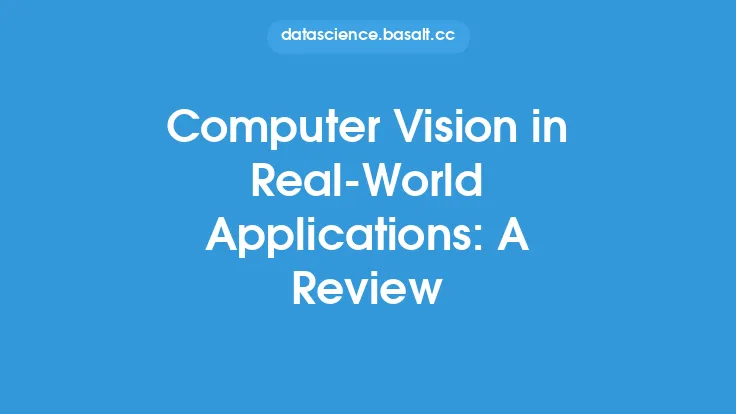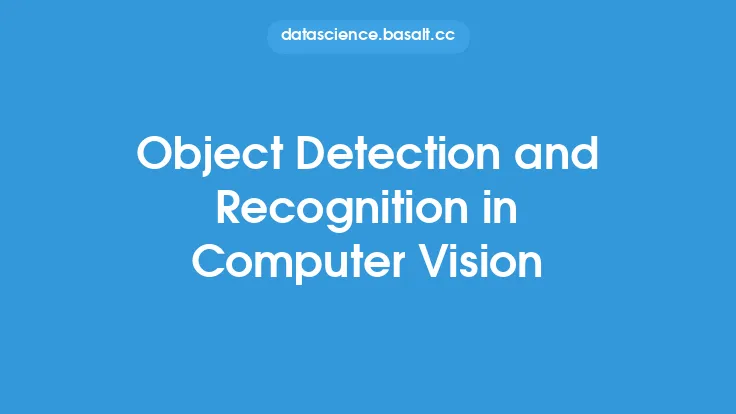Computer vision is a field of study that focuses on enabling computers to interpret and understand visual information from the world. It involves the development of algorithms and statistical models that allow computers to process, analyze, and understand digital images and videos. The goal of computer vision is to automate tasks that would typically require human visual perception, such as object recognition, image classification, and scene understanding.
Introduction to Image Analysis
Image analysis is a crucial aspect of computer vision, as it involves the extraction of meaningful information from digital images. This can include tasks such as image filtering, thresholding, and feature extraction. Image analysis can be performed using various techniques, including traditional computer vision methods and deep learning-based approaches. Traditional computer vision methods rely on hand-crafted features and algorithms to analyze images, whereas deep learning-based approaches use neural networks to learn features and patterns from large datasets.
Computer Vision Techniques
There are several computer vision techniques that are used in image analysis, including edge detection, corner detection, and blob detection. Edge detection involves identifying the boundaries or edges within an image, while corner detection involves identifying the points where two edges meet. Blob detection involves identifying regions of an image that are similar in terms of texture, color, or intensity. These techniques are often used as a pre-processing step for more complex computer vision tasks, such as object recognition and image classification.
Image Features and Descriptors
Image features and descriptors are used to represent the visual information contained within an image. Features can include edges, corners, lines, and shapes, while descriptors are used to describe the appearance of these features. Common image descriptors include SIFT (Scale-Invariant Feature Transform), SURF (Speeded-Up Robust Features), and ORB (Oriented FAST and Rotated BRIEF). These descriptors are often used in tasks such as object recognition, image matching, and 3D reconstruction.
Camera Models and Calibration
Camera models and calibration are essential components of computer vision, as they allow us to understand the relationship between the 2D image and the 3D world. The pinhole camera model is a commonly used camera model, which assumes that light travels through a single point (the pinhole) to form an image. Camera calibration involves estimating the parameters of the camera model, such as the focal length, principal point, and distortion coefficients. This is typically done using a calibration pattern, such as a chessboard or a grid.
3D Reconstruction and Scene Understanding
3D reconstruction and scene understanding are advanced computer vision tasks that involve estimating the 3D structure of a scene from 2D images. This can be done using techniques such as stereo vision, structure from motion, and simultaneous localization and mapping (SLAM). Stereo vision involves estimating the depth of a scene by comparing the disparity between two or more images taken from different viewpoints. Structure from motion involves estimating the 3D structure of a scene by tracking the motion of features across multiple images. SLAM involves estimating the 3D structure of a scene while simultaneously localizing the camera within the scene.
Deep Learning for Computer Vision
Deep learning has revolutionized the field of computer vision, enabling state-of-the-art performance in tasks such as image classification, object detection, and segmentation. Convolutional neural networks (CNNs) are a type of deep learning model that are particularly well-suited to computer vision tasks. CNNs use convolutional and pooling layers to extract features from images, and fully connected layers to classify these features. Other deep learning models, such as recurrent neural networks (RNNs) and generative adversarial networks (GANs), are also being used in computer vision tasks, such as image generation and video analysis.
Applications of Computer Vision
Computer vision has a wide range of applications, including robotics, autonomous vehicles, surveillance, and healthcare. In robotics, computer vision is used to enable robots to perceive and interact with their environment. In autonomous vehicles, computer vision is used to detect and respond to obstacles, such as pedestrians, cars, and road signs. In surveillance, computer vision is used to monitor and analyze video feeds, detecting suspicious behavior and tracking individuals. In healthcare, computer vision is used to analyze medical images, such as X-rays and MRIs, to diagnose diseases and develop personalized treatment plans.
Challenges and Limitations
Despite the many advances that have been made in computer vision, there are still several challenges and limitations that need to be addressed. One of the main challenges is the need for large amounts of labeled training data, which can be time-consuming and expensive to collect. Another challenge is the need to develop models that can generalize well to new, unseen data. This is particularly important in applications such as autonomous vehicles, where the model needs to be able to handle a wide range of scenarios and environments. Finally, there is a need to develop more efficient and scalable computer vision algorithms, which can run in real-time on devices with limited computational resources.
Future Directions
The future of computer vision is exciting and rapidly evolving, with several new trends and technologies emerging. One of the main trends is the use of deep learning models, which are enabling state-of-the-art performance in a wide range of computer vision tasks. Another trend is the use of edge computing, which involves processing computer vision tasks on devices such as smartphones and smart home devices. This is enabling a wide range of new applications, such as augmented reality and smart home automation. Finally, there is a growing interest in the use of computer vision for social good, such as monitoring climate change, tracking wildlife populations, and developing more accessible and inclusive technologies.
